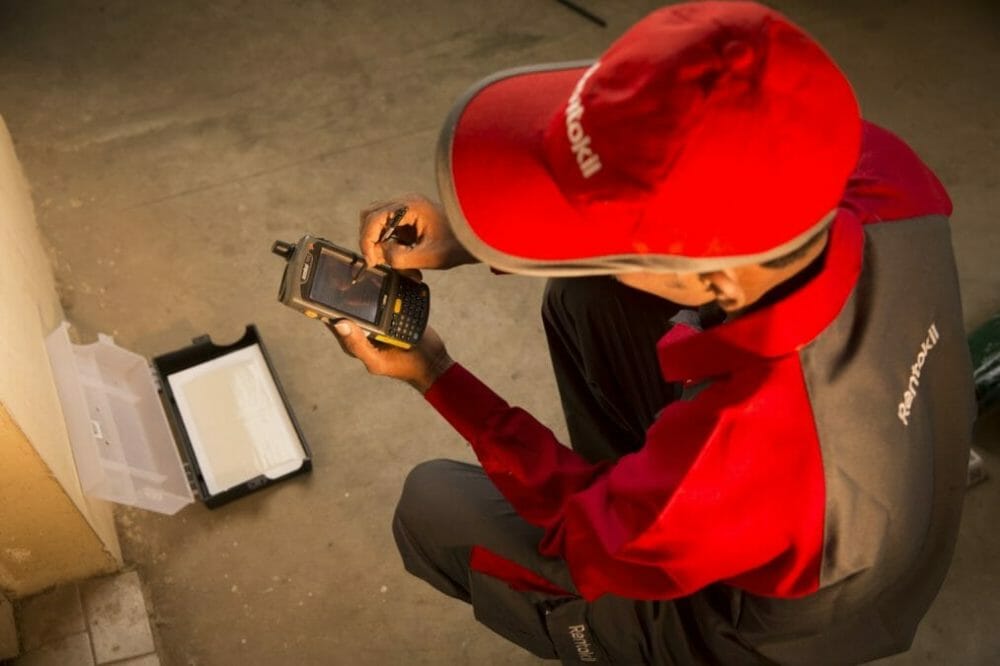With 44,000 employees across 75 countries, Rentokil Initial is a global leader in pest control and hygiene services. As a fast-growing company, it acquires companies regularly. These acquisitions have increased the number of local services teams it has to over 1800 globally. As this rapid growth increases its dependence on cloud-based applications and services, Rentokil Initial needed to increase bandwidth.
While multi-protocol label switching (MPLS) sufficed five years ago — when the internet accounted for over 20% of its overall network traffic and the remaining 80% was destined to a private datacentre — the complexity of provisioning it became too much when traffic patterns inverted due to cloud migration.
“We’ve been using Google services for 11 years now. As you can imagine, the widespread usage of Google Mail, Google Drive, and Google Hangouts, was having a pretty big impact on bandwidth,” said Higgs. “We realised about five years ago that we needed to bring access to the internet as close to our end-users as possible.”
The search for speed and agility led Rentokil Initial down the path of a software-defined WAN, or SD-WAN. While SD-WAN is still somewhat of a buzzword due to no standardised industry definition, there are over 70+ vendors in the marketplace, and so it is important to know that not all SD-WANs are created equal.
VMworld 2019 Europe: Democratising Kubernetes with VMware Tanzu
Rentokil Initial chose VMware SD-WAN by VeloCloud after internal research found it enabled the type of agility it needed to provide local access to the internet while adding increased visibility and management.
“In mature locations, it helps cut costs where bandwidth is more expensive, even in emerging markets where we’re able to implement it effectively,” said Higgs. “In some places, we’ve seen increases in bandwidth by 3,000% and a reduction of between 40 and 50% of our network costs.”
Self-deployment and autonomy
To retain its autonomy and tight control of network processes and security, Rentokil Initial decided to buy directly from partners but manage the entire deployment and day-to-day management itself.
According to Higgs, this was all achieved through its implementation of VMware SD-WAN by VeloCloud. “It doesn’t have to be implemented through IT anymore, we can send it in a box with a little diagram to the end-user, and they can set it up. You don’t need those high-end networking skills to set up a new branch,” he said.
VMworld 2019 Europe: VMware Workspace ONE for Microsoft Endpoint Manager
With this integration, Rentokil Initial soon realised advantages around autonomy. The management interface was simplified; configurations across its SD-WAN deployments were centralised and standardised. Rentokil Initial was also aware it was in an excellent position to scale network management for future acquisitions and corporate growth.
Security and integration
Rentokil Initial has also been able to do away with individual site firewalls that did not enable web security and was able to implement a more holistic security initiative.
“Using VMware NSX Data Center has meant that we can integrate much more quickly. Before we had to be very protective of what we hosted in our data centres. We would never bring in an unsupported or unpatched operating system, we’d have to build new or patch it in situ, and then bring it in, which would always bring delays,” explained Higgs. “With NSX, what we can do is introduce it through its own little bubble. So even if that’s vulnerable, that doesn’t necessarily mean everything else is vulnerable. This has helped us numerous times now to integrate acquisitions quickly, but maintain the integrity of all our other systems.”
How to make containers an IT architect’s best friend







